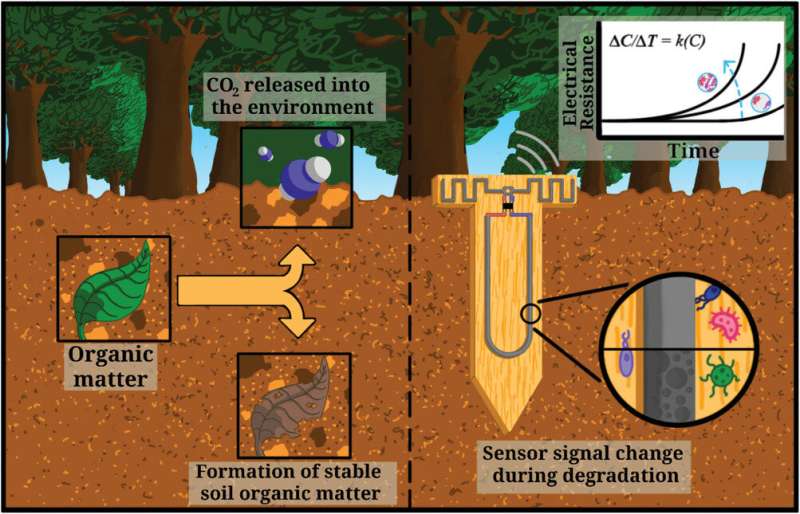New research from the Paul M. Rady Department of Mechanical Engineering into biodegradable sensors may change the way farmers track, measure, and respond in real time to their soil’s microbial activity with big implications for addressing global greenhouse gas emissions.
The work, recently published in Advanced Science, was led by Madhur Atreya (Ph.D.MechEngr’22) and professors Greg Whiting and Jason Neff at CU Boulder. It describes how a cheap and easily printed sensor can measure soil health by tracking it’s own decomposition in real time—all with little to no impact on its outside environment and through the use of easily available electronics.
“The degradation of an object, whether it’s our novel sensor or a rusty old car, can tell you a story about its environment. In this paper, we show that the way a simple biodegradable device fails in soil can tell us something about that soil’s microbial activity that is useful in a variety of situations,” Atreya said.
More than a third of the soil around the globe is depleted, which leads to increased fertilizer use and, in turn, increased greenhouse gas emissions. Atreya said gaining specific insight into the amount of fertilizer used in an area or how healthy that soil is overall is crucial for both improving agricultural supply and potentially slowing the loss of biodiversity in conservation efforts but has traditionally been difficult to accomplish.
That is partially because gaining relevant metrics requires removing the soil and shipping it to a lab for analysis. That takes time and the microbial content in both the sample and the field can change in between. Atreya said other approaches to gather this kind of information are either equally labor intensive or lack the real time reporting and easy data access aspects team is trying to achieve.
“There are two existing programs—the Tea Bag Index and Soil Your Undies—that encourage people around the world to bury items in the soil and quantitatively or qualitatively monitor its physical decomposition to understand surrounding soil health,” he said. “You can think of our new sensor as an electronic version of that approach.”
The team is now focusing on improving the manufacturability and durability of its sensors.
“We are exploring other materials we can use to make similar sensors that may be better and to target more specific soil microbial/enzymatic activity,” he said. “We also recently won a new grant from the Department of Energy’s ARPA-E program which will allow us to explore aspects of the soil nitrogen cycle.”
Atreya spent time as a design engineer in industry before coming to CU Boulder to get his Ph.D. He graduated in the summer of 2022 and currently works as a postdoctoral researcher with Whiting.
“I have been interested in sustainable design for quite some time but never imagined I would be working in printed biodegradable electronics,” he said. “Soil is very complicated and every batch can vary. Luckily, I had a great team of soil and polymer experts in engineering and across campus to help and mentor me along the way.”

